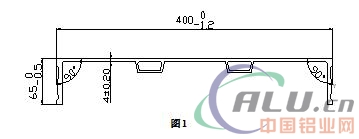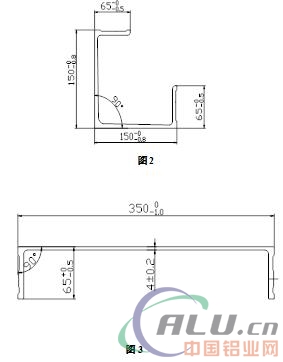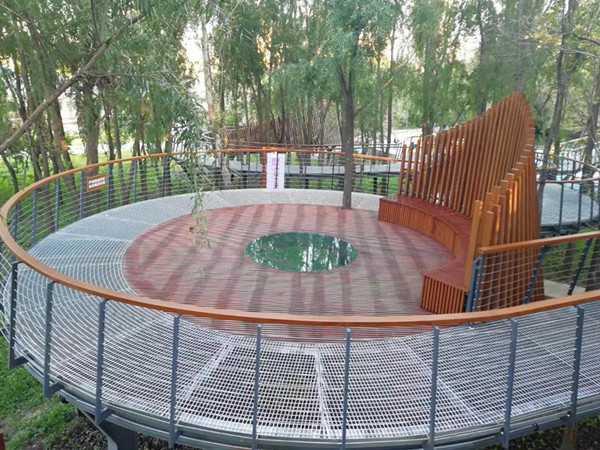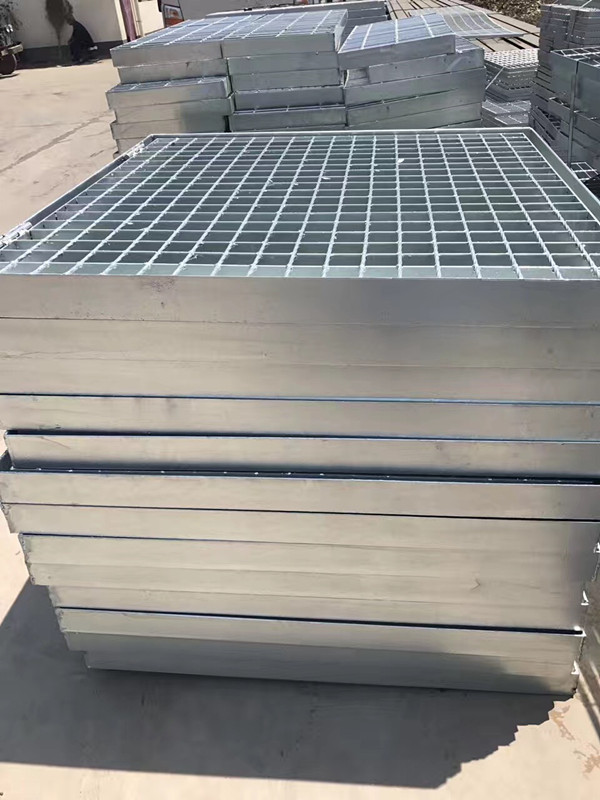[China Aluminum Industry Network] Article published in Lw2016 Proceedings - Authors Wang Hailiang, Luo Zhengjun, Feng Linwei, Wang Xiaobing (China Lear Aluminum Co., Ltd.)
Abstract : This paper describes the influencing factors of the geometric dimensions of large-scale architectural aluminum formwork profiles in extrusion production, and measures for prevention and control. The key factors that cause unqualified geometric dimensions in the production process are analyzed. The aluminum rods and the extrusion process are adopted. , Extrusion parameters, tooling, tension and straightening, and other points of the process control, to solve the impact of extrusion on the geometric dimensions, summarizes the experience of extrusion production of large aluminum formwork profiles and process control methods.
I. Overview
With the rapid development of the aluminum processing industry, large-scale extrusion press technology has rapidly increased, and the ability to produce large-scale aluminum alloy profiles has gradually increased. The trend of large-scale aluminum alloy profiles replacing steel materials in structural parts has become increasingly evident, prompting the rapid development of the aluminum construction industry in construction. With the popularity, building aluminum templates made of 6061 alloy gradually replaced steel templates and wooden templates, which solved some of the shortcomings of the traditional template, greatly improved the construction efficiency and the overall accuracy of the building, and the aluminum formwork was used for R&D and construction applications. A major development in the industry, aluminum substitute steel and aluminum substitute wood are the future and development direction of green building materials.
The aluminum formwork used for building structures is different from the building decoration materials. It is the core component of the entire building construction. In order to improve the accuracy of the building and improve the service life of the building formwork itself, the geometrical dimensional accuracy and mechanical properties of the produced aluminum formwork profiles are The requirements are very high. Its shape is characterized by a large number of specifications, a large outer contour and a large fault surface, a large ratio of thickness to thickness, a large ratio of tongue to tongue, a profiled hollow profile and a semi-hollow profile, a large extrusion difficulty factor and difficulty in forming. These factors make it difficult to control the geometric dimensions (waves, twists, bends, plane gaps, dimensions, angular misalignment, etc.). This article focuses on the main factors affecting the geometric dimensions in extrusion production and the prevention and control measures. Correcting.
Two kinds of typical large aluminum template drawing requirements and alloy properties
1 Several common large-scale architectural template drawings and technical requirements


skills requirement:
1. The angular deviation must not exceed 0 to -0.5°
2. Twisting degree: ≤0.75mm/m, L≤7m, ≤4mm/L
3, bending degree: ≤0.75mm/m, L≤7m, ≤4mm/L
4, the plane gap of no more than 0.2mm per 100mm width, the total width of * 0.2
5, Vickers hardness: ≥15HW
6, the wall thickness deviation shall not be greater than ± 0.2mm
7, the tolerance according to GB/T14846-2008 super high precision execution
2 6061 alloy
6061 alloy, with medium strength, increased Mg and Si content in the alloy composition, and the addition of a small amount of Cu and Cr to increase the strength of the alloy, the alloy also has good plasticity and excellent corrosion resistance, is the preferred material for the production of templates.
The 6061 alloy containing Mg2Si has a high quenching sensitivity and has a great influence on the mechanical properties. The 6061 alloy containing 1.4% Mg2Si is cooled from 545°C to 204°C. The smaller cooling rate should not be less than 650°C/min. Obtain higher intensity after artificial aging.
Three Difficulties Analysis and Geometric Deformation
Figure 1, Figure 3 two profiles are typical flat wide profile, the width to thickness ratio of 100, according to theoretical requirements must be more than 7,500 tons of extrusion machine production, our larger machine is 4500T, extrusion cylinder diameter 368mm, Figure 3 The diameter of the circumscribed circle of the profile is almost equal to the diameter of the extrusion barrel. The circumscribed circle diameter of the profile in Figure 1 has greatly exceeded the diameter of the extrusion barrel, and there are two small holes in the middle of the profile. When the extrusion is performed, small mold cores are prone to serious deviation. Move phenomenon, which affects the material forming. To produce these two types of profiles, the general planar flow splitting die cannot meet the technical requirements of the extruded profile. This requires designing and manufacturing a special wide-width extrusion die to ensure that the profile forming and the width and plane gap are qualified.
The difficulty is characterized by extremely serious wall thickness and surface clearance, and it is easy to appear unqualified in the width direction, and generally more small. The angle also appears to be too small, the wall thickness is prone to wall thickness is not enough, the plane gap is easy to appear more concave phenomenon, the large surface of the profile is prone to wave bump phenomenon.
The production of Figure 2 prone to angle unqualified phenomenon, the profile is a typical semi-hollow cantilever profile difficult to see for all production, extrusion can easily collapse when the cantilever, the mold is easily damaged, is a typical difficult to extrude qualified profiles , It is difficult to ensure dimensional accuracy and shape-position tolerance, and the angle size changes more, and the overall size is difficult to control.
The angles of the three types of profiles exceed the requirements of any higher grade in the "standard" of aluminum extrusion materials, which has brought great difficulties to the design and manufacture of molds.
Four factors affecting the geometric dimensions and solutions
According to the profile section and the weight of rice, we chose to produce on the 4500T equipment. The diameter of the equipment barrel is 368mm, which can realize quick die change. Each change of one set of mould can save 10-20 minutes and equipped with intelligent digital water mist. The on-line quenching equipment can realize online quenching. Due to the extensive application of on-line quenching equipment integrated with water mist and wind, the surface quality and product yield of the products are improved, and the labor intensity is greatly reduced.
Ingots We use the homogenized ingots, and the aluminum rod heating furnace uses an industrial heating furnace.
1 Aluminum Rod Impacts and Measures
The quality index of the ingot is mainly at the grain size one level, with less hydrogen content, less fine slag, uniform metallurgical structure, no cracks, looseness, porosity, and segregation of elements. In this way, the plasticity and deformability of the ingot are good, the extrusion force is reduced, and the extrusion speed is increased. Otherwise, the extrusion speed will be slow and the die wear will be great.
Because aluminum rods are produced by semi-continuous casting in casting production, the cooling rate is fast and produces non-equilibrium crystallization, which deviates from the equilibrium crystallization state. In the solid solutions of α(Al), the inhomogeneous Si, Mg, and Mg2Si produce intragranular segregation and segregation in the region. During the crystallization process, coarse Mg2Si, Fe and Si generate β (AlFeSi) phase. This uneven phenomenon causes the local resistance of the aluminum rod to be large, and the internal stress caused by the casting causes many disadvantages to the extrusion. Impact, the elastic deformation caused by the uneven force of the mold during extrusion, resulting in greater deformation of the geometric dimensions.
Therefore, the round ingot for large section extrusion is an ingot after homogenization at 560°C. In order to eliminate intragranular segregation, the strengthening phase Mg2Si is fully dissolved, the internal stress generated by the casting is eliminated, the extrusion resistance is reduced, the plasticity of the metal is increased, the deformation caused by the extrusion is reduced, and the change in the geometric dimension during extrusion can be reduced.
2 Tooling Impact and Measures
The design of large-scale aluminum mold mold fully considers the distribution position of the diverging hole and the diversion hole, so that each part can absorb the same amount of metal, and try to enlarge the diverging hole without affecting the strength of the mold and the surface quality of the profile. The angle of the bridge is designed to be reasonable. The angle is too large to increase the friction and slow the metal flow. The smaller the angle is, the easier the metal is to weld and discharge the material faster. The bridging point of the bridge should be as smooth as possible to reduce the welding dead angle. The length of the working belt should be reasonably calculated to uniform metal flow. In order to reduce the partial pressure of the mold, reduce the deformation of the geometric dimensions when discharging.
Before working on the machine, the working belt must be carefully polished to ensure flatness and verticality. No unevenness shall occur. The deformation of the mold during the extrusion of the profile has a great influence on the geometric dimension accuracy of the profile. When the mold material is heated to about 480°C, the hardness of the mold is reduced, and the mold is elastically deformed in the direction of force. In order to eliminate or reduce this deformation, we adopt special mold profiling support pads to increase the mold resistance to reduce the deformation. After actual measurement, under the same process conditions, the use of special profiling support pads can reduce the deformation of 0.1 mm or more in wall thickness. Others The geometrical dimensions of various parts have also been greatly improved, which can guarantee the smooth extrusion production. Some of the products that do not meet the standard can meet the standard requirements after shaping through the finishing process.
Influence of extrusion process parameters and measures
6061 alloy deformation resistance, so the ingot heating temperature should be biased upper limit (460 °C -490 °C). When the aluminum rod is heated, attention should be paid to the temperature monitoring of the power frequency furnace, and it is necessary to avoid unevenly heated aluminum rods on the machine. Practical experience shows that uneven heating of the aluminum rod is difficult to discharge smoothly, resulting in a large deformation, even causing Squeeze sullen phenomenon, can not be smooth production and release.
The mold temperature is 440°C to 460°C. The resistance heating method is adopted for the mold. It cannot be produced immediately after the temperature is reached. Because the mold has a large volume, it easily causes the surface to warm and the internal temperature is low. When the machine on the production will cause mold die-breaking phenomenon, causing the die to be scrapped immediately, even if it can be forced out of the material is also likely to cause greater deformation, the material is unstable, so the mold must be kept warm for 2 hours above the upper machine can be produced, but the mold In the furnace heating and holding time can not exceed 10 hours, otherwise it is easy to produce mold annealing phenomenon, resulting in mold empty and the work zone with the phenomenon of spot corrosion, and affect the life of the mold and the profile of the geometric dimensions and surface quality.
The barrel temperature is 410°C - 430°C. The extruder barrel maintains a constant temperature to make the metal flow uniform. Because the temperature of the extrusion cylinder is increased, the temperature difference between the inner and outer layers of the ingot is reduced, and the deformation resistance of the inner and outer layers of the metal during extrusion is uniform, so that the metal flow in the extrusion process is even and the geometrical deformation is reduced.
The choice of extrusion speed is very important for the conformance of the geometric dimensions. The operator should select a reasonable material according to the discharge conditions of the profile, and try to choose a large extrusion speed as long as the geometric size and other process parameters and the energy of the equipment allow. To increase productivity, we generally control the range of 5m/min to 12m/min; high extrusion speed, short contact time between the aluminum rod and the inner wall of the mold, less energy transfer, and the possibility of forming an adiabatic extrusion process in the deformation zone. Increasing the speed of metal causes the surface cracks, strains, large changes in angle, and unequal wave irregularities on the surface of the product. When the temperature of the rod is slightly higher, the size of the profile changes, and the surface is not good, it is necessary. Gradually reduce the extrusion speed. If the speed is reduced too much, the on-line quenching temperature of the profile will be affected. If the geometrical dimensions and the quenching temperature meet the process requirements and the extrusion can be performed smoothly, the production can be continued. Otherwise, the mold is changed to production.
In order to ensure the mechanical properties of the profile, the exit temperature of the profile extrusion should be controlled within the temperature range of 510°C to 540°C. The 6061 alloy has a high quenching sensitivity, requires a high quenching strength, and has a fast cooling rate. Quenching, the temperature dropped rapidly to below 150 °C, open the intelligent numerical control water mist on-line quenching equipment to ensure quenching process requirements.
Cooling should be automatically or manually adjusted evenly, otherwise it will cause damage to the profile, and the geometrical dimensions such as bending, plane clearance, and angle deformation will not be met.
Stretch Straightening Effect and Measures
Stretch straightening profile temperature can not be too high, the profile can not be stretched when the temperature dropped below 50 °C car straight stretch car straight, if the temperature is too high to stretch the car straight, when the profile will be cooled to a greater extent The bending deformation.
Use special fixtures and special mats between the jaws of the stretcher and the profile when tensioning and straightening to support the profile and reduce the deformation length of the head and tail. Especially for some large cantilever profiles and hollow profiles, if the clamps are not used to clamp and stretch directly without a special pad, the deformation of the profile head and tail can be too large. When the finished product is sawed, the deformation must be cut off. This has caused a decline in the yield and waste. For profiles with long cantilevered walls and closed cross-sections, insert a special pad in the closed cavity during straightening and place the support frame on the suspended wall section to reduce the amount of deformation in the length direction.
Fixtures and special mats are designed by dedicated personnel, specially managed, and used by workers. At the same time, in order to prevent workers from being unwilling to use special fixtures and special mats due to their inconvenience, a reward and punishment mechanism linked to the rate of production and wages was established to enhance the quality of workers. awareness.
Tensile straightening is the key link to ensure that the geometric dimensions of the profile are qualified. When stretching, attention should be paid to the reasonable control of the tensile force. The tensile force should not be too large, as long as it can ensure that the product's degree of bending and twisting can meet the requirements. Too much tensile force can cause unacceptable geometrical clearances such as plane gaps and angles. However, too small tensile force will affect the mechanical properties of the product after aging, especially the yield strength. When the tensile strength is too low, the yield strength will be too low. It should be controlled between 1% and 2%.
V Conclusion
1. In the production process of large-scale aluminum formworks, it is necessary to control the quality of the aluminum bar, process temperature, extrusion speed, cooling rate, and control of stretching and straightening to ensure the product's geometric size and mechanical properties.
2. After the above control, the geometrical dimensions of the produced aluminum formwork profiles have reached the requirements of the drawings, and some of the products that have been slightly deformed beyond the standard can meet the standard requirements after being shaped by the finishing process.
3. Extrusion of large profiles must be combined with equipment conditions and profile characteristics of the profiles to develop a feasible extrusion production program, and through continuous practice to summarize and improve, you can master the technology of producing large profiles.
references
[1] Luo Su, Wu Xikun. "Handbook of Practical Technology of Aluminum Profile Processing", Central South University Press, June 2006, first edition.
[2] Xiao Yaqing, Xie Shuisheng, Liu Jingan et al. “A Practical Manual of Aluminum Processing Technologyâ€, Metallurgical Industry Press, 2005.
[3] GB/T14846-2008 Aluminum and Aluminum Alloy Extrusion Profile Size Deviation.
The steel grating be welded to products . Normally, hot galvanizing will be carried out after end welding process. The range PH6 to PH12.5, a stable protective film will be formed on the zinc surface, the hot dipped galvanized steel grating has good anti-corrosive property. Of course, the steel grating also have other surface treatment, for example painted and powder coated .
Steel grating can be cutting to different kinds of shape as per your special needs.
Steel grating including flat grating, 'I' shape grating, serrated grating.
In generally , the steel grating be used as stair tread, platform, fence, trench cover, ceiling, etc.
The advantage of steel grating :
firm welding
smooth surface
high strength


Steel Grating
Steel Grating,Stainless Steel Grating,Galvanized Steel Grating,Hot Dipped Galvanized Steel Grating
ANPING COUNTY SHANGCHEN WIREMESH PRODUCTS CO.,LTD , https://www.scfiltermesh.com
